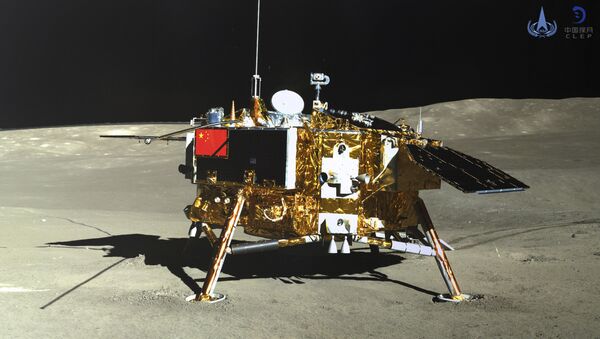Scientists from China presented the primary results of the study of samples of the mantle on the far side of the moon, according to the Nature journal.
The lander's rover, Yutu-2, discovered low-calcium (ortho)pyroxene and olivine in samples — high-density minerals with a low calcium content and a high iron content.
READ MORE: Cold Moon: China's Chang'e-4 Rover, Lander Survive First Lunar Night on Far Side
Here's a map of Yutu-2's drive route in Von Kármán crater, created by Phil Stooke of the University of Western Ontario. Day 5 is tentative & day 4 still approximate due to lack of available info, but excellent work, using released Chang'e-4 mission images. https://t.co/zsk0oc4SSI pic.twitter.com/WC1Rgfwi8z
— Andrew Jones (@AJ_FI) May 17, 2019
Scientists think that these rocks were originally part of the upper mantle, but were ejected to the surface due to the fall of meteorites.
They note that over the past 60 years, only the crust of the Earth's satellite, which consists of light minerals from the class of plagioclase, has been studied. It is believed that the mantle contains more heavy chemical elements such as iron and manganese, but the composition of the forming rocks of the mantle remains unknown.
Yutu-2 will continue to study lunar mantle material.

